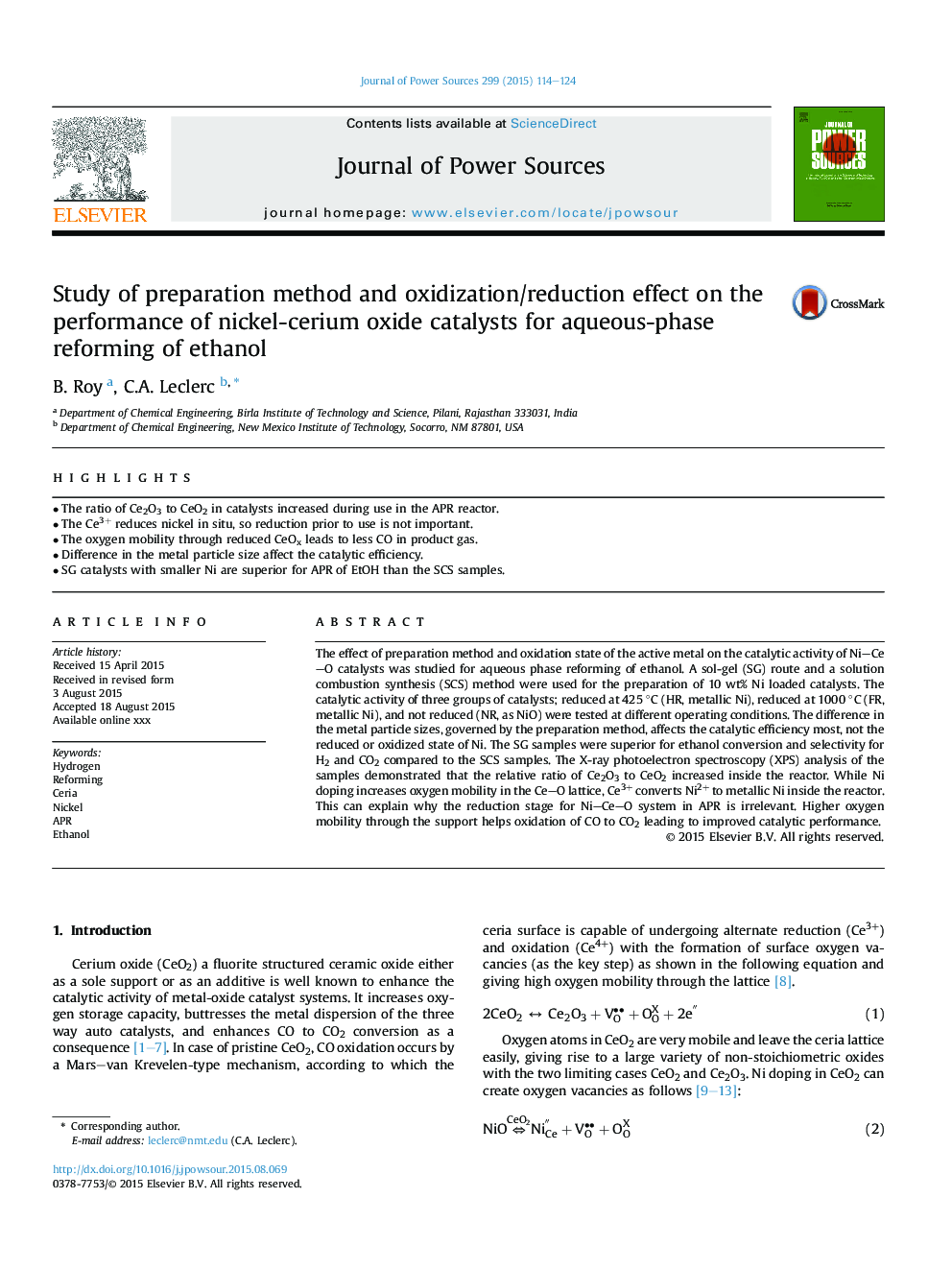| Article ID | Journal | Published Year | Pages | File Type |
|---|---|---|---|---|
| 7730167 | Journal of Power Sources | 2015 | 11 Pages |
Abstract
The effect of preparation method and oxidation state of the active metal on the catalytic activity of Ni-Ce-O catalysts was studied for aqueous phase reforming of ethanol. A sol-gel (SG) route and a solution combustion synthesis (SCS) method were used for the preparation of 10 wt% Ni loaded catalysts. The catalytic activity of three groups of catalysts; reduced at 425 °C (HR, metallic Ni), reduced at 1000 °C (FR, metallic Ni), and not reduced (NR, as NiO) were tested at different operating conditions. The difference in the metal particle sizes, governed by the preparation method, affects the catalytic efficiency most, not the reduced or oxidized state of Ni. The SG samples were superior for ethanol conversion and selectivity for H2 and CO2 compared to the SCS samples. The X-ray photoelectron spectroscopy (XPS) analysis of the samples demonstrated that the relative ratio of Ce2O3 to CeO2 increased inside the reactor. While Ni doping increases oxygen mobility in the Ce-O lattice, Ce3+ converts Ni2+ to metallic Ni inside the reactor. This can explain why the reduction stage for Ni-Ce-O system in APR is irrelevant. Higher oxygen mobility through the support helps oxidation of CO to CO2 leading to improved catalytic performance.
Related Topics
Physical Sciences and Engineering
Chemistry
Electrochemistry
Authors
B. Roy, C.A. Leclerc,
